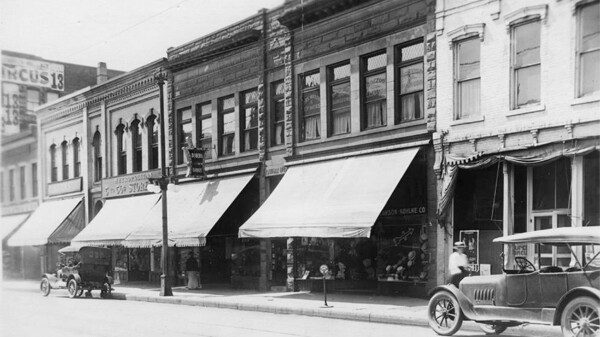When the Rubber Met the Road
the Chippewa Valley’s car culture has a long history

It was waterways that first brought people to the Chippewa Valley, but for more than a century cars have been traversing our streets and highways. The automotive age arrived in Eau Claire in May 1901 when Dr. David W. Ashum, a prominent local physician, bought a steam-powered car. (Yes, steam-powered, like a train: The internal combustion engine was still in its infancy, and steam cars were the top technology of the day.) Ashum’s vehicle is mentioned in Lois Barland’s definitive local history, Sawdust City, but there’s no reference to how the local horses reacted to the noisy, steamy contraption.
Other prominent locals soon had their own automobiles, and soon enough there was need for auto repairmen. “The first real accident came in 1904 when Dr. (John) Lyman’s car crashed into the curb while turning the corner of North Barstow and Madison,” Barland wrote. “It went out of control hitting a delivery wagon and the dashboard splintered. Neither Dr. Lyman nor his chauffeur was injured.” By 1905, according to Barland, there were 13 automobiles in Eau Claire, including seven steam cars, three Franklins, and three Ramblers.
With speedier vehicle came the need for a speed limit, which the city set at 10 miles per hour, except for Barstow Street, where the limit was 6 mph. “Speed” was
a relative term, especially by modern standards. In 1910, a record was set when a man drove the 107 miles from Minneapolis to Eau Claire in 4 hours, 15 minutes – or an average of 25 mph. The same year, a car on an “endurance” tour took five hours to travel from La Crosse to Eau Claire.
A few years later, in February 1903, the city’s first auto show was held at Fournier’s Ballroom, Barland wrote in her second volume of local history, The Rivers Flow On. Some of the vehicles on display had names modern drivers will recognize, including Ford, Buick and Cadillac, as well as many they won’t, such as Reo, Hudson, Rambler, Cole, Stevens-Duryea, Chalmers, Overland, KisselKar, Mason, and Regal. Some of these long-forgotten models were made in Wisconsin: KisselKars in Harford, for example, and Ramblers in Kenosha. While Eau Claire never became a car capital like other industrial cities across the Midwest, its claim to manufacturing fame in the 20th century was directly tied to the automobile industry. The Gillette Safety Tire Co. began making tires in Eau Claire in 1917, and over time the massive plant – later known as Uniroyal-Goodrich – became the region’s biggest employer. Uniroyal may have closed 20 years ago, but the rubber treads it produced are still deeply ingrained in the Chippewa Valley’s culture.





















